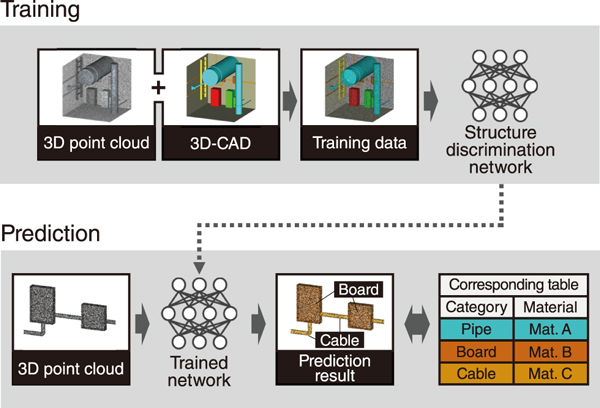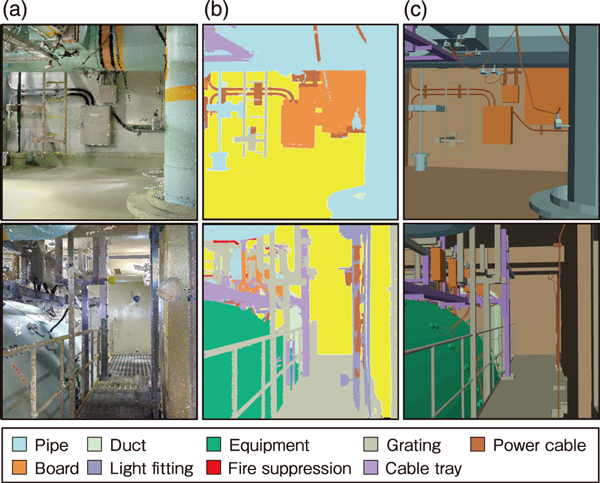
Fig.1 Overview of our structure discrimination method

Fig.2 Example of performance evaluation results
In the decommissioning of TEPCO’s Fukushima Daiichi Nuclear Power Station (FDNPS), it is important to know the radiation dose distribution in the work space before planning to take appropriate measures to reduce the radiation exposure of human workers. To calculate the behavior of radiation attenuation, absorption, and scattering for obtaining an accurate radiation dose distribution, it is essential to have information on the layout, shape, and materials of the structures, in addition to the partial dose rate values measured at the on-site workspace. In past, such information was manually created by three-dimensional (3D) modeling using specialized software based on 3D point cloud data (a set of points with 3D positional information) measured by a 3D laser scanner in the workspace. However, this task is expensive (high time and human-labor costs) because of the large amount of data that cannot be discriminated owing to missing measurement data and because it requires specialized knowledge.
Therefore, we are developing a structure discrimination method to automatically estimate structure information from 3D point cloud data using deep learning (Fig.1). Our method can estimate the shape region and category label for input data by training a structure discriminator based on point shape patterns. Furthermore, by assigning predefined material information to the estimated structure category, the cost of creating a 3D model can be reduced drastically.
To train a structure discrimination network, a large training dataset (a set of inputs and ground truth necessary for machine learning; in this study, 3D point cloud data with category labels) is required; however, such a dataset is not easy to prepare. We efficiently created a training dataset by assigning labels from 3D-Computer Aided Design (3D-CAD) data, which were manually prepared based on the management classification of structures used in the field, to 3D point cloud. The proposed method was applied to the existing nuclear facilities data to train the network, and the performance was evaluated by cross-validation. The result showed that high discrimination accuracy was achieved for nine major structure categories (Fig.2). Thus, our method can contribute to improving the efficiency of decommissioning by automating the work that previously required manual assignment of the shape region and category to the 3D model.
Currently, we are working toward further improving the discrimination performance by using information on the appearance of structures. In the future, we will try to develop an algorithm to discriminate untrained structures and apply it to the FDNPS by integrating the 3D modeling method and our method.
(Takashi Imabuchi)